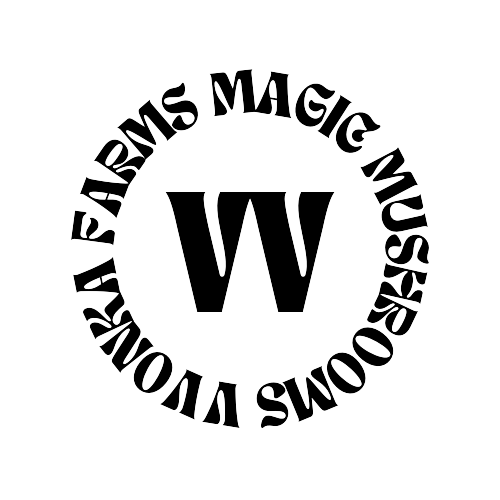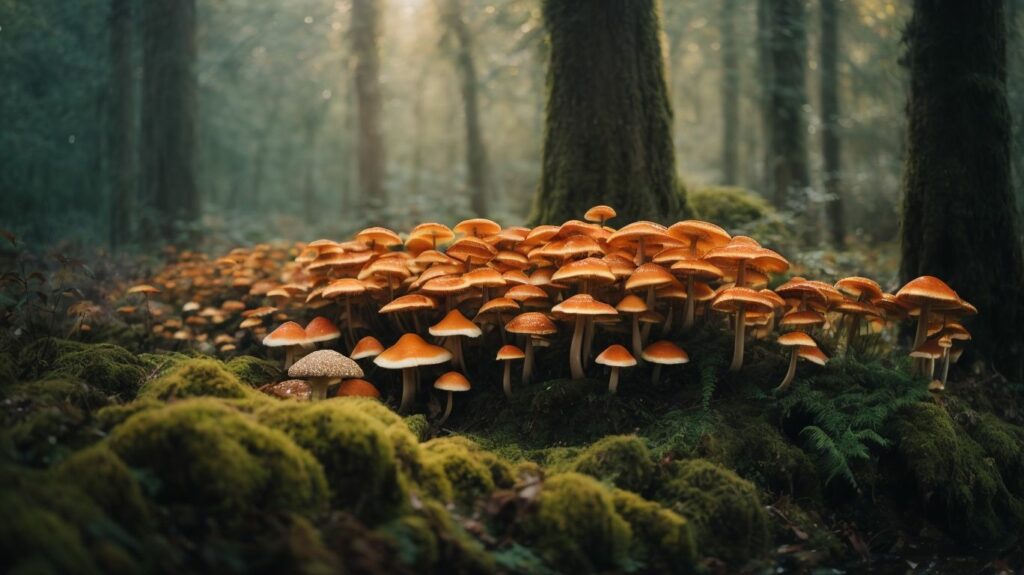Are you interested in learning about the fascinating world of growing shrooms? With the recent rise in popularity of medicinal and recreational use of mushrooms, it’s important to understand the process of growing them. In this article, we will dive into the basics of cultivating your own shrooms and the necessary steps to follow in order to do so successfully. By the end of this, you’ll be ready to embark on your own mushroom growing journey.
What Are Shrooms?
Shrooms, also known as magic mushrooms, are fungi that contain psychedelic compounds like psilocybin and psilocin. These substances have been used for centuries in spiritual and cultural practices due to their hallucinogenic effects. Shrooms typically have a distinct shape, with a cap and stem, and can vary in color, size, and potency depending on the species.
It’s important to understand that consuming shrooms can have potential risks and should be approached with caution. If you are considering using shrooms, it is advisable to educate yourself on their effects and potential risks, and seek guidance from experienced individuals or professionals.
Pro-tip: Always start with a low dose to gauge your sensitivity.
What Are The Different Types Of Shrooms?
When it comes to growing shrooms, there are several different types to choose from. Each type has its own unique characteristics and growing requirements. In this section, we will discuss the four most common types of shrooms: Psilocybe Cubensis, Psilocybe Mexicana, Psilocybe Cyanescens, and Psilocybe Azurescens. By learning about these different types, you can determine which one is best suited for your growing environment and desired effects.
1. Psilocybe Cubensis
Psilocybe Cubensis is a popular type of psychedelic mushroom known for its unique properties. Growing these mushrooms requires careful attention and specific steps. Here are the key steps to successfully grow Psilocybe Cubensis:
- Gather Supplies: Collect necessary substrate materials such as vermiculite, brown rice flour, and mason jars.
- Prepare the Growing Environment: Sterilize the substrate and jars to create a clean and controlled environment.
- Inoculate the Substrate: Use a sterile syringe to inject spores into the substrate, ensuring proper colonization.
- Monitor and Maintain the Growing Environment: Keep a close eye on temperature, humidity, and light conditions to support the growth of the mushrooms.
Growing Psilocybe Cubensis offers various benefits, including cost-effectiveness, customizable strains, and access to fresh and potent shrooms. However, it’s important to be aware of the legal implications, risks of contamination, and accidental ingestion. After harvesting, properly store the shrooms in a cool and dry place for long-term use.
2. Psilocybe Mexicana
Psilocybe Mexicana is a type of psychedelic mushrooms that has a significant historical and cultural value. Originally found in Mexico, these mushrooms have been utilized for centuries in religious and spiritual rituals. Psilocybe Mexicana is known for its small size, often growing in grassy areas or decomposing organic material. Its main psychoactive compound, psilocybin, can cause hallucinations and altered states of consciousness.
Today, Psilocybe Mexicana remains popular among enthusiasts and researchers for its distinct properties and potential therapeutic benefits. Its intriguing history and cultural significance make it a captivating topic for exploration and research.
Just be careful not to confuse these with regular mushrooms, unless you want to have a fun time in your spaghetti.
3. Psilocybe Cyanescens
- Gather all necessary supplies, including a spore syringe, substrate, and a growing container.
- Prepare the growth environment by sterilizing the substrate and creating suitable levels of humidity and temperature.
- Inoculate the substrate by injecting the Psilocybe cyanescens spore syringe, ensuring even distribution.
- Monitor and maintain the growth environment by regulating temperature, humidity, and light exposure.
Pro-tip: For optimal growth, it is recommended to use a wood-based substrate and keep the temperature cooler for Psilocybe cyanescens, also known as “Wavy Caps.”
4. Psilocybe Azurescens
Psilocybe Azurescens is a potent psychedelic mushroom species that is renowned for its high psilocybin content. To cultivate this species, follow these steps:
- Choose a suitable location for cultivation, such as a shaded outdoor area.
- Prepare a substrate, typically consisting of a mixture of wood chips and grain spawn.
- Inoculate the substrate with Psilocybe Azurescens spores.
- Maintain proper environmental conditions, including temperature and humidity.
- Monitor the growth of the mushrooms and protect them from pests and contaminants.
- Harvest the mature mushrooms by gently twisting and pulling them from the substrate.
- Store the harvested mushrooms in a cool and dry place.
Psilocybe Azurescens was first discovered in the Pacific Northwest region of the United States and has gained popularity in the psychedelic community due to its potent effects and unique characteristics. Today, it is highly sought after by mushroom enthusiasts for its strong psychedelic properties and distinctive appearance.
Growing shrooms is like raising kids, it requires patience, attention, and a lot of questionable ingredients.
How To Grow Shrooms?
If you’re interested in growing your own mushrooms, you’ve come to the right place. In this section, we’ll take you through the step-by-step process of how to grow shrooms. From gathering supplies to monitoring and maintaining the growing environment, we’ll cover all the essential steps you need to know. By the end, you will have the knowledge and confidence to successfully grow your own delicious and nutritious shrooms. So let’s get started!
1. Gather Supplies
- Research and educate yourself about the different equipment and supplies needed for growing mushrooms.
- Make a list of the necessary supplies, such as a mushroom spore syringe, growing containers, substrate material, and a pressure cooker.
- Find a reputable supplier or store to purchase the supplies from. Look for quality products and read reviews from other growers.
- Ensure you have a clean and sterile working environment to prevent contamination during the growing process. Use disinfectants and wear gloves.
- Consider gathering additional items like a thermometer, humidity gauge, and grow lights to create an optimal growing environment.
2. Prepare The Growing Environment
Preparing the growing environment for shrooms is an essential step in successful cultivation. Here is a list of steps to follow:
- Clean the growing area thoroughly to prevent contamination.
- Set up proper lighting, temperature, and humidity levels for optimal growth, which includes temperatures around 70-75°F (21-24°C) and humidity levels between 90-95%.
- Create a sterile environment by using a flow hood or working in a glovebox.
- Prepare the substrate, which can be a mixture of grain, sawdust, or compost. Sterilize the substrate to eliminate any potential contaminants.
- Inoculate the substrate with mushroom spores or mycelium.
- Place the inoculated substrate in a dark and warm location to allow the mycelium to colonize.
- Monitor the growing environment daily, adjusting temperature, humidity, and light as needed.
3. Inoculate The Substrate
Inoculating the substrate is a crucial step in growing shrooms. Follow these steps to ensure successful inoculation:
- Prepare your spore syringe or culture.
- Sterilize your work area and equipment.
- Inject the spores or mycelium into the substrate.
- Seal the jars or bags to create a controlled environment.
- Incubate the substrate at the right temperature and humidity levels.
- Allow the mycelium to colonize the substrate over several weeks.
- Check for contamination and address it promptly if necessary.
Pro-tip: Maintain a clean and sterile environment throughout the inoculation process to prevent contamination and promote healthy growth.
Remember, a watched pot never grows shrooms.
4. Monitor And Maintain The Growing Environment
To successfully grow shrooms, it is crucial to monitor and maintain the growing environment. Here are the steps to ensure optimal conditions:
- Keep the temperature between 70-75°F (21-24°C) using a heater or air conditioner.
- Maintain humidity levels around 90% by using a humidifier or misting the growing area regularly.
- Provide indirect light using fluorescent or LED lights for about 12 hours a day.
- Ensure proper air circulation by using fans or an exhaust system to prevent stagnant air and promote oxygen exchange.
- Regularly check and adjust these parameters to maintain a stable growing environment.
Pro-tip: Use a hygrometer and thermometer to accurately monitor temperature and humidity levels in your shroom growing space.
Grow your own shrooms, because nothing says personalized medicine like growing your own strains in a closet.
What Are The Benefits Of Growing Shrooms?
Growing shrooms at home has become increasingly popular in recent years, and for good reason. Not only is it a fun and rewarding hobby, but it also offers a range of benefits. In this section, we will discuss the various advantages of growing shrooms, including how it can be a cost-effective option compared to buying them from a dispensary. We will also explore the ability to customize different strains of shrooms and the benefits of consuming fresh and potent shrooms that have been grown in your own home.
1. Cost-effective
Growing shrooms can be a budget-friendly way to have a consistent supply of fresh and potent mushrooms. Here are the steps to grow shrooms:
- Gather supplies: Purchase spores, substrate, containers, and other necessary equipment.
- Prepare the growing environment: Create a clean and controlled space with proper temperature and humidity.
- Inoculate the substrate: Inject spores into the substrate and allow them to colonize.
- Monitor and maintain the growing environment: Regularly check temperature, humidity, and airflow to ensure optimal conditions for growth.
Fun fact: Growing your own shrooms can save you a significant amount of money compared to buying them from a supplier.
2. Customizable Strains
When growing shrooms, one of the benefits is the ability to create customizable strains according to your preferences. Here are the steps to achieve this:
- Research: Learn about the characteristics of different strains to determine your desired outcome.
- Spore Selection: Choose spores from specific strains that possess the traits you desire for your customizable strain.
- Inoculation: Inoculate your substrate with the selected spores to initiate the growth process.
- Isolation: Isolate the mycelium from different strains to prevent cross-contamination and maintain the purity of your customized strain.
- Propagation: Continue the growth process by transferring the isolated mycelium to new substrate or grain jars.
- Observation: Monitor the growth and development of each strain to ensure the desired results for your customizable strain.
No need to search for a trustworthy dealer, just grow your own magic mushrooms and always have a fresh supply on hand.
3. Fresh And Potent Shrooms
Fresh and potent shrooms offer a more intense and enjoyable psychedelic experience. To ensure you have fresh and potent shrooms, follow these steps:
- Harvest at the right time: Pick the mushrooms when the veils under the caps are just starting to break.
- Dry properly: Use a dehydrator or a fan to dry the mushrooms at a low temperature. This helps preserve their potency.
- Store in an airtight container: Place the dried mushrooms in a sealed container with desiccant packs to prevent moisture and preserve freshness.
- Keep away from light: Store the container in a dark place, as exposure to light can degrade the potency of the mushrooms.
What Are The Risks Of Growing Shrooms?
While growing shrooms may seem like a fun and exciting hobby, it’s important to be aware of the potential risks involved. In this section, we will discuss the various risks associated with growing shrooms. From legal implications to potential contamination and accidental ingestion, it’s crucial to understand the potential consequences before embarking on this journey. So, let’s dive into the risks of growing shrooms and how to mitigate them.
1. Legal Implications
When it comes to growing shrooms, it’s crucial to be aware of the legal implications involved.
- Research: Familiarize yourself with the laws regarding the cultivation and possession of psilocybin-containing mushrooms in your jurisdiction.
- Understand the risks: Cultivating shrooms in areas where it is illegal can lead to legal consequences, including fines and potential criminal charges.
- Seek legal alternatives: If growing shrooms is not legal in your area, explore alternative options such as purchasing spores for microscopy purposes.
Remember, staying informed about the legal implications of growing shrooms is essential for a safe and responsible experience.
2. Contamination
Contamination is a significant risk when cultivating mushrooms. To reduce this risk, it is important to follow these steps:
- Ensure cleanliness: Thoroughly clean and sterilize all equipment and surfaces before beginning the cultivation process.
- Use quality substrate: Purchase a reputable substrate that is free from any contamination.
- Practice proper hygiene: Before handling the substrate or mushrooms, wash your hands thoroughly to prevent introducing any contaminants.
- Control the environment: Maintain a controlled and sterile environment by using a clean and well-ventilated grow room with appropriate temperature and humidity levels.
- Monitor for signs of contamination: Regularly inspect the substrate and mushrooms for any signs of mold, unusual discoloration, or off smells.
- Take immediate action: If contamination is detected, remove the affected mushrooms and clean the contaminated area to prevent further spread.
- Dispose of contaminated material: Properly dispose of any contaminated substrate or mushrooms to prevent the spread of contaminants.
By following these steps, you can minimize the risk of contamination and increase the chances of a successful mushroom cultivation.
3. Accidental Ingestion
Accidental ingestion of shrooms can have unintended consequences, so it’s important to take precautions:
- Education: Understand the appearance and effects of different mushroom species.
- Safe storage: Keep shrooms securely stored away from children and pets.
- Clear labeling: Properly label all substances to avoid confusion or accidental consumption of shrooms.
- Seek medical help: If accidental ingestion of shrooms occurs, seek immediate medical attention.
- Prevention: Minimize the risk of accidental ingestion by keeping shrooms out of reach and securely stored.
How To Harvest And Store Shrooms?
Now that you have successfully grown your own shrooms, it’s time to learn how to harvest and store them for future use. In this section, we will discuss the best practices for harvesting your shrooms and the proper methods for storing them to ensure their potency and freshness. From the harvesting process to the different storage options, we’ve got you covered with all the essential information to make the most out of your shroom harvest.
1. Harvesting Process
Harvesting shrooms involves several steps to ensure a successful and safe process. Here is a list of steps to follow:
- Identify the right time for harvesting, usually when the caps of the mushrooms have fully opened.
- Using clean scissors or a sharp knife, carefully cut the mushrooms at the base of the stem. Avoid pulling them out to prevent damage.
- Place the harvested mushrooms on a clean, dry surface like a paper towel or a mesh drying rack.
- Allow the mushrooms to dry in a well-ventilated area with low humidity. This can take around 1-2 weeks.
- Check the mushrooms regularly for any signs of mold or contamination. Discard any infected mushrooms.
- Once the mushrooms are completely dry and cracker-dry, store them in an airtight container away from light, heat, and moisture.
Ensure to follow these steps carefully to optimize the quality and potency of your harvested shrooms.
2. Proper Storage Methods
Proper storage methods are crucial for preserving the potency and freshness of harvested shrooms. Follow these steps:
- Harvesting Process: Cut the mushrooms at the base, leaving a small portion of the stem intact.
- Drying: Spread the harvested mushrooms on a clean surface or use a food dehydrator set to a low temperature.
- Airtight Packaging: Store the dried mushrooms in an airtight container, like a mason jar or vacuum-sealed bag, to prevent moisture and air exposure.
- Dark and Cool Environment: Keep the container in a dark and cool place, like a pantry or refrigerator.
True story: Once, a friend stored their mushrooms in a plastic baggie in a drawer. The mushrooms lost their potency and became moldy due to improper storage. Remember to follow these Proper Storage Methods for long-lasting and potent shrooms.
Frequently Asked Questions
What are some common mistakes to avoid when growing shrooms?
Some common mistakes to avoid when growing shrooms include not properly sterilizing equipment, not maintaining proper humidity and temperature levels, and not using quality spores or spawn. It’s also important to properly ventilate the growing area and to avoid contamination by properly cleaning and disinfecting the space.
What equipment do I need to start growing shrooms?
To start growing shrooms, you will need a growing container, substrate (such as compost, straw, or sawdust), spores or spawn, a sterile growing environment, and a source of light. You may also need additional tools like a pressure cooker, thermometer, and air pump for more advanced methods.
How long does it take to grow shrooms?
The time it takes to grow shrooms can vary depending on the type of mushroom and the growing method used. Oyster mushrooms, for example, can take around 2-3 weeks to grow, while morels can take up to a year. The growing process also requires a period of incubation, typically around 1-2 weeks before the mushrooms start to fruit.
What is the best temperature and humidity for growing shrooms?
The ideal temperature for growing shrooms is around 75-85°F (24-29°C) with a humidity level of 80-90%. Different types of mushrooms may have slightly different temperature and humidity requirements, so it’s important to do some research on the specific type you are growing.
Can I grow shrooms indoors?
Yes, shrooms can be grown indoors as long as you have the proper equipment and environment. Indoor growing can be more controlled and allows for easier maintenance of temperature and humidity levels. It also reduces the risk of contamination from outdoor elements.
Is it legal to grow shrooms for personal use?
It depends on the location and laws in your area. In some places, it may be legal to grow shrooms for personal use, while in others it may be considered illegal. It’s important to research and understand the laws and regulations in your area before starting to grow shrooms.




